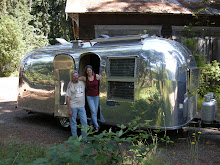 Envirotextiles in Glenwood Springs, CO, is a pioneer in the development of hemp and hemp blend textiles. We were fortunate enough to spend several days with them recently and not only had a chance to learn more about their business, they shared a bit of their philosophy with us as well. Spearheaded by their tireless and charismatic founder Barbara Fillipone, they are leading by example the efforts to improve corporate responsibility and transparency in manufacturing processes and labeling. Her daughter Summer, through her work with the Hemp Industry Association, in addition to running the day to day operations, directs their efforts to help legalize industrial hemp production in the U. S.
Envirotextiles in Glenwood Springs, CO, is a pioneer in the development of hemp and hemp blend textiles. We were fortunate enough to spend several days with them recently and not only had a chance to learn more about their business, they shared a bit of their philosophy with us as well. Spearheaded by their tireless and charismatic founder Barbara Fillipone, they are leading by example the efforts to improve corporate responsibility and transparency in manufacturing processes and labeling. Her daughter Summer, through her work with the Hemp Industry Association, in addition to running the day to day operations, directs their efforts to help legalize industrial hemp production in the U. S.Working out of an old log church which they have lovingly rescued from a state of disrepair, Barbara, Summer, and their dedicated staff, designs, imports, and distributes a beautiful array of hemp and hemp blend textiles to manufacturers here and abroad. Barbara’s expertise in all aspects of the textile trade, and her dedication to sustainable manufacturing practices is reflected in the company’s products and culture. Barbara splits her time between their operations in Glenwood Springs and their manufacturing partners overseas. Her “hands-on” approach to every aspect of their business, from the raw materials to the social equity and manufacturing transparency policies of their suppliers insures both the quality of their goods and the quality of life of their suppliers’ work force. When we arrived, Barbara had just returned from Mexico where she is working on a variety of projects to benefit the locals many of whom work on her products, often at her own expense. Her passion for her products and the people that help make them is inspiring.
There are so many stories that can be told about both Barbara and the company she leads, that it is hard to know where to begin. What started out as a one day visit, soon turned into several very enjoyable days trying to absorb all the projects they are involved with. It also helped lead us to our next stop, but that’s another story.
Barbara is currently leading the charge in developing a “Product Information Transparency” system that includes detailed information for the consumer on how and from what a product is made. We soon found that we shared a common distrust for the plethora of “organic”, “green” or “eco-friendly” third-party certifications that seem to be sprouting up everywhere. As we found out from our work in the furniture industry, these are often nothing more than thinly disguised front groups for the industry they are supposed to be regulating.
Others seem to start out with good intentions and principals, only to lose track of their goals through the necessity of raising money to fund their operations. Frequently the best source for these funds are the companies that are mostly interested in obtaining a “green” stamp for their products from a marketing standpoint, and may or may not be truly dedicated to improving how they run their business. From the consumers’ standpoint, it is difficult to know the difference between a product that comes from a company that is truly doing their best to reduce the impact of their manufacturing and distribution operations from one that is simply interested in the label. Barbara’s proposal focuses on complete transparency, and allows the consumer to make a choice based on clear information. She shared with us some of the product labeling she has designed for this and which will be rolled out for public comment in the near future.
We were impressed by the detailed information this labeling will provide and agree that letting the consumer decide, similar to the way the food industry was regulated through the product labeling system developed for that industry is the best way to go. Third-party certifications, as we found out can range from good to meaningless, and the consumer being hard pressed to know the difference, will often develop distrust for all of them. Clear, detailed product information is hard to fudge, and gives the consumer what they need to make a choice without the layers of bureaucracy or the potential for the wolf to be guarding the hen house. The information contained on the label ranges from where, how, and from what it is made, the social responsibility of the company that makes it, its uses and biodegradability, and more.
For the consumer who really doesn’t care, they can just buy it because they like the product. But for the increasing number of consumer’s who want to know, the information is right there and there is no need for a stamp to tell them it is “green”. We applaud Barbara for her efforts in developing and pushing for the adoption of these standards.
Next-The Story of Industrial Hemp in the U.S.




No comments:
Post a Comment